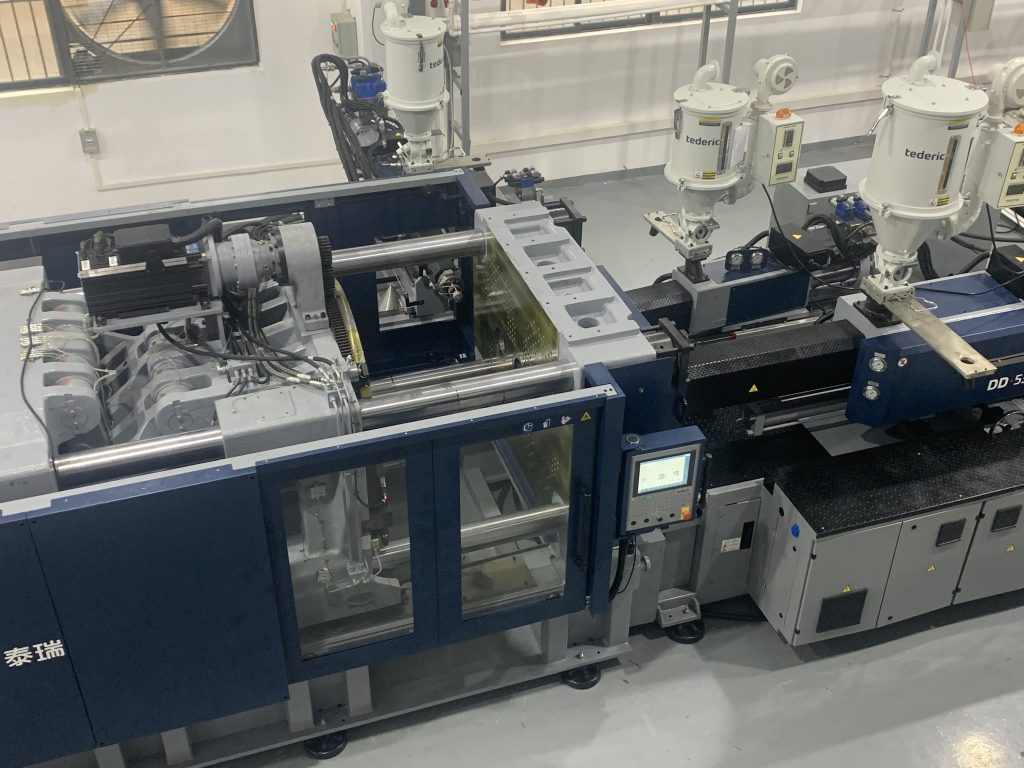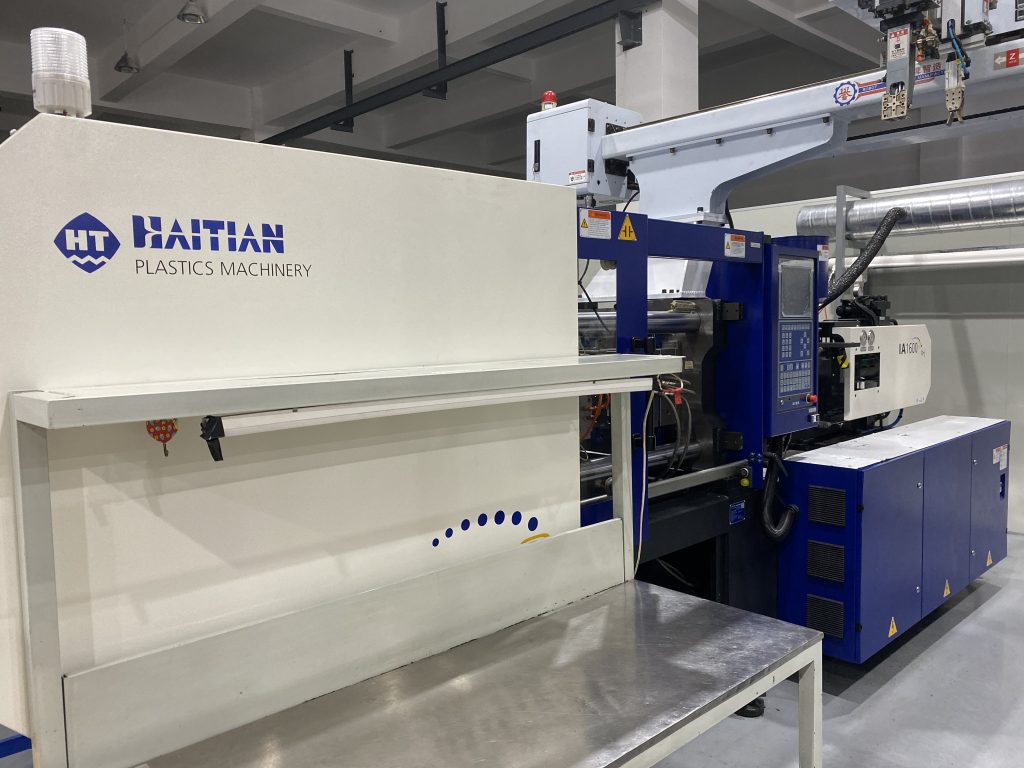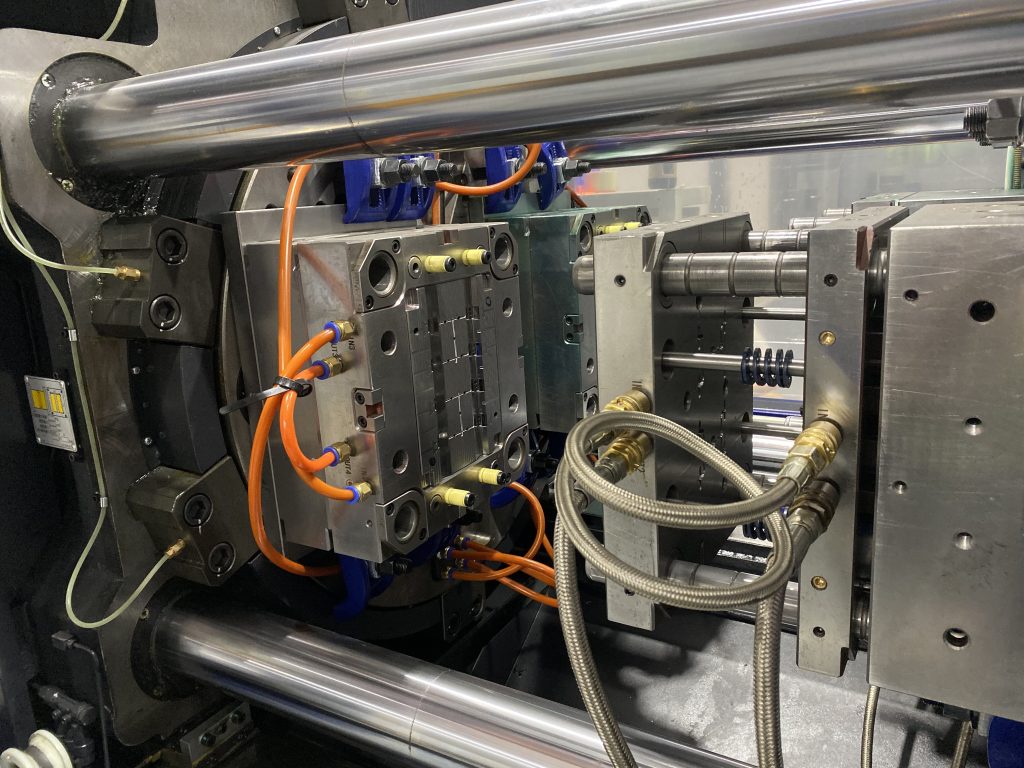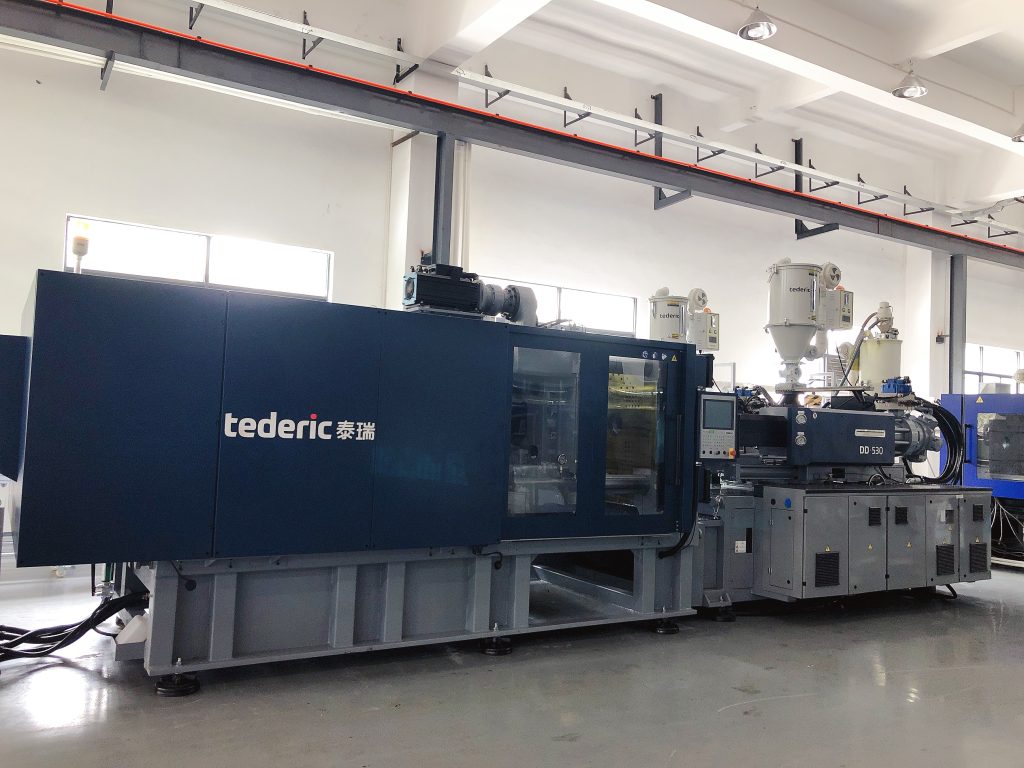HONESTY MOULD is good at making 2K and 3K injection molds for more than 20 years. BOSCH is one of our main customers. In order to meet production requirements, HONESTY MOULD purchased 2K&3K injection machines in May, 2022.

What is 2K mold?
2K mold is a mold in which two plastic materials are injected on the same injection molding machine and molded in two times, but the product is only released once. Generally, this molding process is also called two shots injection molding, which is usually completed by a set of mold and requires a special two-color injection molding machine.
2K molds are increasingly popular in the market, because this process can make the appearance of the product more beautiful, easy to change colors without spray painting.
What are the types of two-color mold?
Two-color mold can be divided into: core rotary type, core back type, push plate rotary type according to the structure classification. Among them, the core rotary type can be divided into two types: split type and conjoined type. The split type is to use two sets of molds installed on an injection molding machine to complete the injection molding of two-color products, and the conjoined type is a set of mold. The core rotary split type is widely used in China.
What are the characteristics of the two-color mold?
1. The two shapes of cavity are different, and one product is formed respectively, while the two shapes of core are exactly the same.
2. After cavity and core are rotated 180° from the center, they must be matched. This inspection action must be done during design, and this point has higher requirements on the positioning and processing of the mold base.
3. The total thickness of cavity top plate plus A plate should not be less than 170mm. Please carefully check other reference data for this type of injection molding machine, such as maximum mold thickness, minimum mold thickness, KO hole distance, etc.
4. The gate of the three-plate mold should preferably be designed to automatically release the mold. Special attention should be paid to whether the demoulding action of the soft plastic gate is feasible.
5. When designing cavity for the second injection, in order to prevent the second cavity from scratching the plastic of the product that has been molded for the first time, space can be designed. However, the strength of each sealing position must be carefully considered, that is, in the injection molding, whether there will be deformation of the plastic under the large injection pressure, which may lead to the possibility of the second injection molding.
6. During injection molding, the product size of the first injection molding can be slightly larger, so that it can be pressed more tightly with another core during the second molding, so as to achieve the effect of sealing.
7. Please note if the flow of the plastic impel the first molded product to deform its sealing position during the second injection. If this is possible, there must be a way to improve it.
8. Before the A and B plates are clamped, pay attention to whether the cavity slider or lifter will reset first and crush the product? In this way, we must find a way to make A and B plates to close the mold first, and then the slider or lifter mold can be reset.
9. The cooling lines layout of the two cavities and two cores should be as sufficient as possible, and should be balanced and the same.
10. Because the soft rubber is easily deformed. So the hard plastic of the product is injected first, and then the soft plastic of the product is injected.


What is 2k moulding?
2k moulding – sometimes known as double injection or 2 shot moulding – is a very innovative way to produce complicated moulded parts from 2 different materials. It’s a highly meticulous, specialised and automated manufacturing process which controls the injection of multiple materials.
It is specialised because it involves the combination of hard and soft thermoplastics or thermoplastic (TP) and thermoplastic elastomer (TPE).
It’s applicable to a broad range of products; think medical devices, keys on a computer keyboard and even all the specific parts that go into a car’s headlights.
There are many other potential uses for it too. For example, it can be used to improve the grip on product handles – for items like power drills, toothbrush’s, walkie talkie’s etc. Plastics are integrated into the product grip and this can be done through the use of 2k moulding.
How does 2k moulding work?
Simply put, the plastic moulding technology blends 2 materials or 2 different colour materials into one ending plastic part by using a specific 2k injection moulding machine. This machine has the power to take two totally different polymers and transform them into a single, final product.
A chemical bonding process is required so that the two or more materials can be combined into one component. The strategic choice of materials are a fundamental factor for the project’s success or not when using 2k injection moulding. Also, throughout this process, it’s vital to use the appropriate classification of cleanroom, given the type of product you are creating.
What’s the difference between 2k moulding and overmoulding?
A common question. Let’s first define overmoulding.
Overmoulding is also a type of injection moulding process that allows for the combination of two or more different materials into a single product. This usually includes a rigid, plastic-base component overlaid with a pliable, thin rubber-like thermoplastic elastomer (TPE) exterior layer or other materials using either a 1 shot (insert moulding) or 2 shot (2k) technique.
The main differences between overmoulding and 2k moulding can be summarised as follows:
- Overmoulding can be both a single shot (insert moulding) or two-shot. 2k moulding is just a 2 shot process.
- Production volume. 2k tends to be a lot bigger than overmoulding and is used for larger operations.
- In the overmoulding process, the material used must be cold to be removed. However with 2k moulding, the polymer is typically still flexible and hot – therefore it allows for more greater functionality.
- 2k moulding allows for large number of materials that can act as the moulding substance or equally be moulded on. With overmoulding, you are more restricted with the usable materials.
What are the advantages of 2k Moulding?
There are many advantages to 2k moulding including:
- Versatility. Due to the nature of 2k moulding, this process can be used for a variety of product designs across different industries. This could be cameras, automotive parts, power switches, medical devices etc. (More on medical devices below.)
- Improved quality. As the moulding uses clear plastics, coloured graphics and neat finishes, it has multi-material efficiency. Furthermore it can be more durable and more aesthetically pleasing as many colours can be blended in the manufacturing process.
- Increased product value and marketability. This multi-material efficiency of course improves the utilitarian aspect of the product and thus its overall marketplace value.
- Expense. 2k moulding is a streamlined process which allows for a lower price per unit… as all manufacturing procedures are completed in the injection stage.
- Time. With no secondary processing, there is a gain in cycle time with it being a constant process. The end results means less assembly time & greater efficiency.
- Reduced handling and secondary assembly. For example it’s less likely that you will have to prime, paint or coat the product afterwards.
- Reduces cost and waste associated with potential assembly defects.
- Enhanced tactile and cosmetic product features.
These are the main benefits associated with 2k moulding. While the counter argument and potential drawback is that the mould for 2k moulding and running the 2k moulding machine is more expensive… where high volume is needed, the overall cost and time can be significantly lower, thanks to a greater reduction in overall assembly and labour costs.
2k Moulding Design Considerations
Choosing the right material is very important. While 2k moulding certainly gives you more liberty in your creative expression, there are still fundamentals to adhere to. Take note of what plastics you are combining as some potentially may work better together than others. Factors such as viscosity and environmental protection are all things to consider from the outset.
If the 2 given materials are not compatible either physically or chemically – the end result will inevitably be a sub-par product… with deformation or other bonding issues like delamination where the different materials fall apart.
In summary, there are numerous other nuances to consider in the design process such as parting lines and the draft angle. However starting off in the right manner with the correct material choice will inevitably set the tone for the project. This is critical for every project, particularly when it comes to medical devices.
Three-shot molding
Three-shot molding, also known as multi-component molding or multi-shot molding, is a manufacturing process in which three different materials are injected into a mold to create a finished product. This process is commonly used to produce complex parts with multiple colors, textures, or materials in a single molding operation.
The three-shot molding process typically involves a machine with three separate injection units, each of which injects a different material into the mold. The first shot creates the base material or substrate, while the second and third shots add additional features or elements to the part. The process can be repeated with additional materials to create even more complex parts.
One of the advantages of three-shot molding is that it can eliminate the need for secondary operations such as painting, assembly, or bonding. This can reduce manufacturing time and costs while also improving product quality and consistency.
Three-shot molding is used in a wide range of industries, including automotive, consumer goods, medical, and electronics. Some common applications include multi-colored buttons, cosmetic packaging, and medical devices with soft-touch grips.
Overall, three-shot molding is a versatile and efficient manufacturing process that can help companies produce high-quality parts with complex designs and multiple materials in a single operation.

